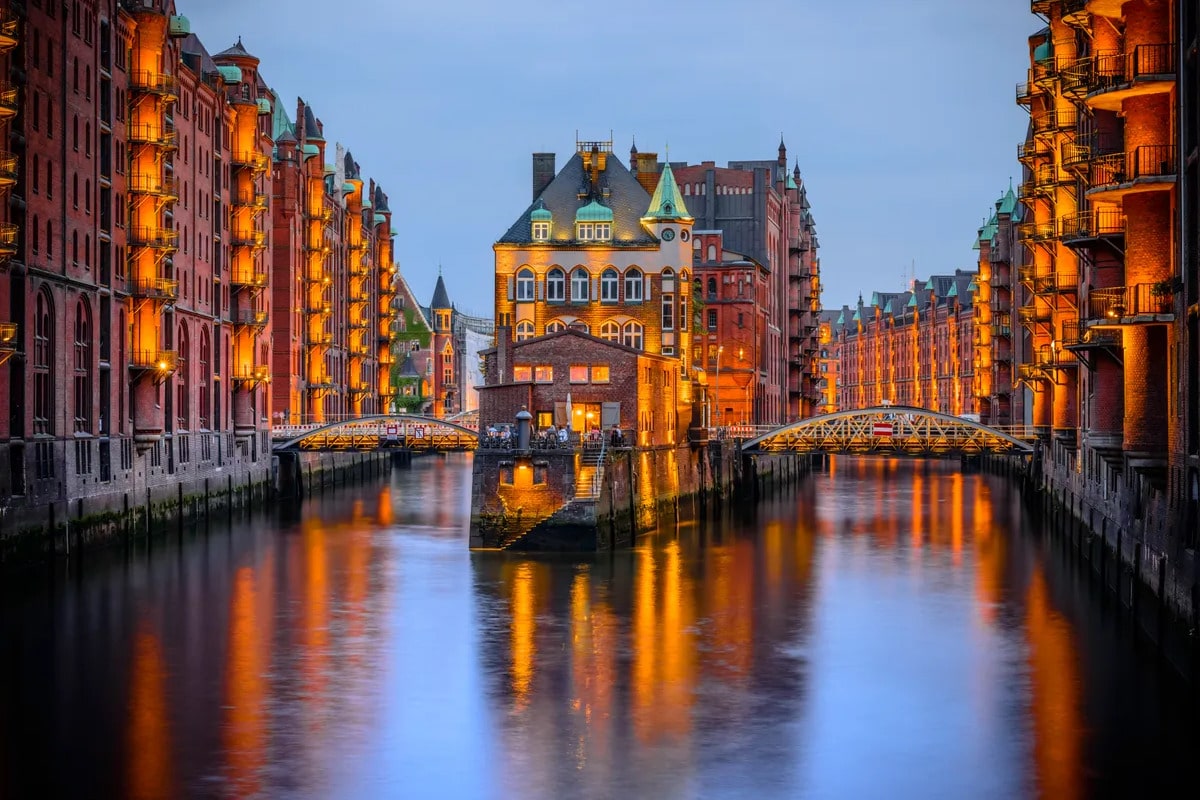Hamburg is one of the most fascinating and important cities in Germany. It impresses with its rich history, striking architecture and unique atmosphere. This is a city of ports, canals, bridges and cultural contrasts, where historic heritage blends harmoniously with modern urban spaces. Tourists from all over the world visit not only for the sights and culture but also to experience the rhythm of life in Hamburg. Here is a collection of interesting and informative facts about Hamburg that you may not have known.
- Hamburg is the second-largest city in Germany after Berlin. It has a population of over 1.8 million people, and more than 5 million when including the surrounding metropolitan area. The city has the status of a Free and Hanseatic City and is also a federal state.
- Although Hamburg is located 100 kilometers from the North Sea, it is Germany’s largest seaport. Hamburg’s port is the third-largest in Europe after Rotterdam and Antwerp. A significant portion of the goods entering the European Union passes through this port.
- There are more than 2,500 bridges in Hamburg, making it the European city with the most bridges. This number is greater than in Venice, London and Amsterdam combined. Many of them span the numerous canals that cross the city.
- Hamburg does not have a capital city because it is a city-state. It has a unique administrative status within Germany, similar to Berlin and Bremen. It combines the functions of both a city and a federal state.
- The Elbphilharmonie, one of the most modern concert halls in Germany, is located in Hamburg. It was built on the foundation of an old warehouse and features a wave-like facade. Since its opening in 2017, it has become a symbol of modern Hamburg.
- The largest miniature museum in the world, Miniatur Wunderland, is located in Hamburg. It features over 15 kilometers of model train tracks with detailed replicas of countries, cities, airports and landscapes. Millions of visitors come to see it every year.
- Hamburg regularly experiences flooding due to its location on the River Elbe and tidal influences. A complex system of dikes and locks has been built to protect the city. The most devastating flood occurred in 1962, resulting in over 300 deaths.
- The St. Pauli district is world-famous for its nightlife and Reeperbahn street. It is home to numerous bars, clubs, theatres and venues for alternative culture. It was in this district that The Beatles began their music career in the early 1960s.
- Hamburg has the world’s oldest municipal zoo still in operation — Tierpark Hagenbeck. It opened in 1907 and was the first zoo to use open enclosures instead of cages, using moats and terrain for separation. This concept was later adopted by zoos around the world.
- Hamburg is one of the greenest cities in Germany, with around 14 percent of its area covered by parks, forests and lakes. The largest park, Stadtpark, is a popular recreation area and hosts open-air concerts in the summer. Cycling is also a widely used mode of transport in the city.
- One of the oldest stock exchanges in Germany is located in Hamburg, established in 1558. Although it no longer serves its original financial function, the building is still used for cultural events and conferences. It reflects the city’s long-standing trading traditions.
- Hamburg was the first city in Germany to ban diesel cars on selected streets. This decision was made for environmental reasons due to excessive emissions. The city continues to promote sustainable transport solutions.
- Every May, Hamburg celebrates the anniversary of its port with the Hafengeburtstag festival. This large-scale event features a parade of ships, concerts, fireworks and traditional food. It attracts hundreds of thousands of tourists and is one of the city’s most iconic celebrations.
- Hamburg’s culinary culture includes unique local dishes, such as Labskaus — a mixture of meat, beets, potatoes, egg and pickled herring. This dish originated with sailors and is still enjoyed today. The city is also known for its cafés and bakeries.
- Since the 18th century, Hamburg has been a center for press freedom. Some of Europe’s first independent newspapers were printed here. Today, major media companies such as Der Spiegel are based in the city, making Hamburg an important media hub.
- Hamburg has more than 60 theatres, around 100 music stages and dozens of museums, making it one of Germany’s most cultural cities. Both classical performances and modern experimental productions take place here. Cultural life is supported by public institutions as well as private foundations.
These fascinating facts about Hamburg offer a deeper understanding of the city’s diversity and uniqueness. It combines port strength, cultural richness, historical legacy and environmental responsibility. Hamburg is a city that surprises at every turn and leaves a lasting impression. Its rhythm, atmosphere and individuality make it a true model of a modern European metropolis.





